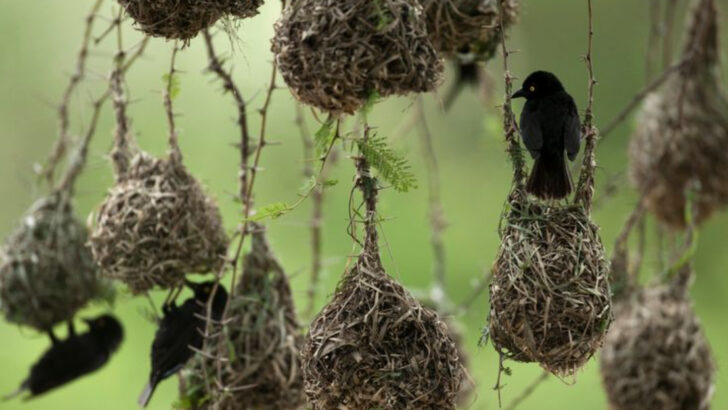If birds had blueprints, they’d put human architects to shame.
These creatures don’t just toss twigs together—they weave, sculpt, and engineer masterpieces in treetops, cliffsides, mudbanks, and even cacti.
From hanging baskets that sway in the breeze to fortified fortresses hidden in plain sight, bird nests are nothing short of miraculous. Each design reflects the builder’s personality, instincts, and the wild challenges of their environment.
This post takes you inside the world of 16 species that take nest-building to an entirely new level.
Some spin silk-like fibers into tiny cradles. Others pile sticks into towering structures that last for decades.
One thing’s for sure: these birds aren’t just making nests. They’re making statements.
Let’s meet the feathered engineers behind nature’s most jaw-dropping home designs.
Bowerbird
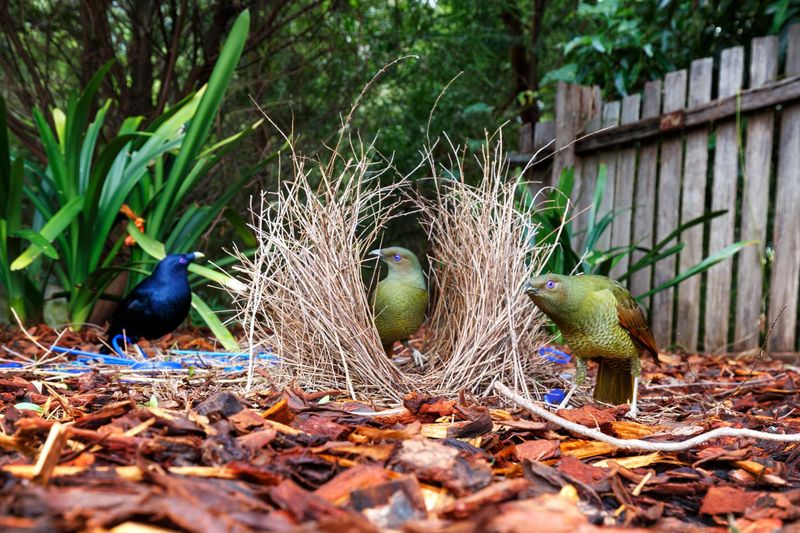
With artistry rivaling that of human architects, the male Bowerbird is a master of construction. He builds an elaborate bower, decorating it with vibrant colors to attract a mate.
These structures, resembling art installations, are crafted from twigs and adorned with objects like shells and berries. One can’t help but admire the Bowerbird’s dedication to aesthetics.
Each bower reflects the builder’s personality, making it a truly unique spectacle. Did you know? Some species even favor a specific color, often blue, to appeal to potential partners. Their architectural skills make them standout builders.
Weaver Bird
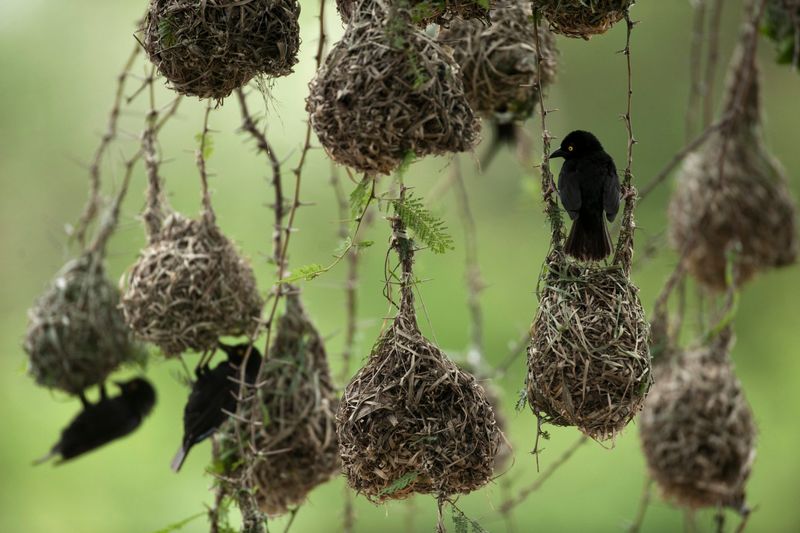
Known for their remarkable weaving skills, Weaver Birds construct nests that resemble finely woven baskets. Suspended from trees, these intricately designed nests provide safe havens for their occupants.
A Weaver Bird’s dexterity is evident as it precisely weaves each strand of grass. Their vibrant plumage adds a splash of color to the verdant landscape. Each nest is a testament to the bird’s perseverance and skill.
These avian artisans work tirelessly to ensure their homes are both functional and secure, showcasing nature’s blend of beauty and practicality.
Horned Grebe
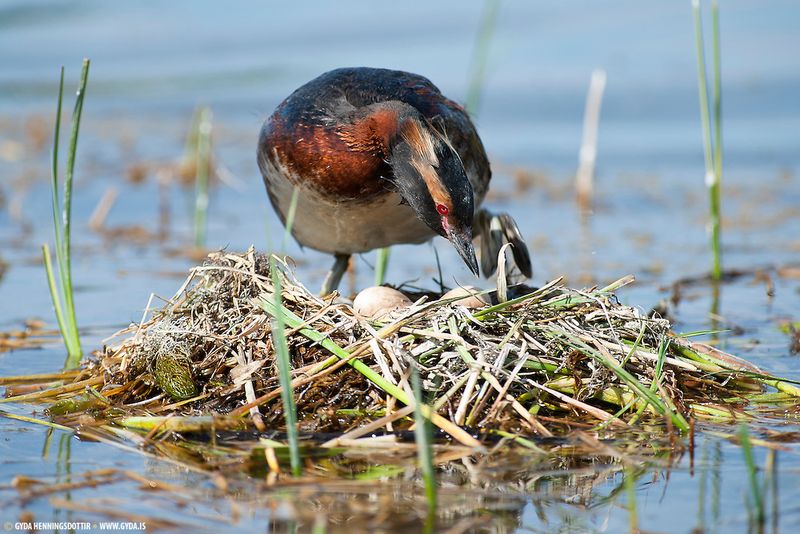
Floating nests are the hallmark of the Horned Grebe, a bird that crafts its home from reeds and aquatic vegetation. These nests float freely on the water’s surface, blending seamlessly with the natural surroundings.
The construction is both clever and efficient, allowing for movement with the water’s gentle sway, which helps deter predators. The nest is anchored by plant materials, ensuring stability even in changing weather conditions.
In the tranquil setting of a lake, the Horned Grebe’s nest becomes a serene haven for raising its young. This innovative nest design is a testament to the bird’s adaptability and foresight.
Hummingbird
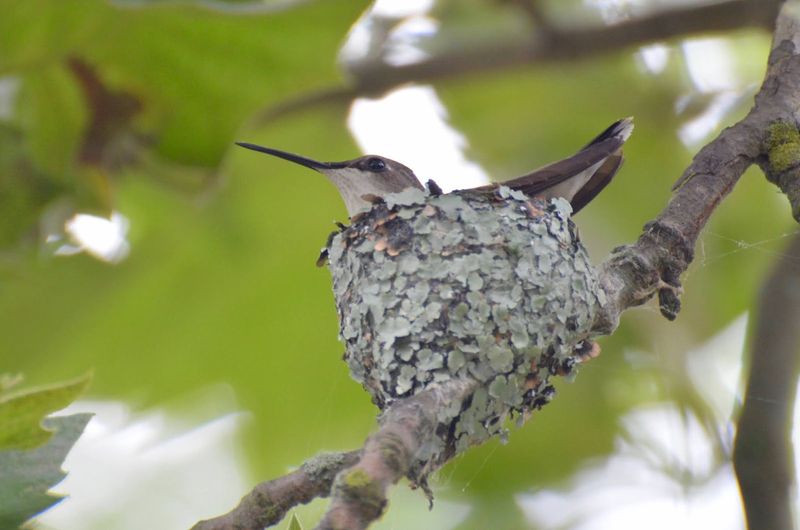
In the realm of tiny architects, the Hummingbird stands out with its delicate nest. Using spider silk and soft plant materials, they craft a cup-shaped home that expands as the chicks grow.
Their meticulous construction ensures the nest is both secure and flexible. Camouflaged with lichen, these nests blend seamlessly with the surroundings, shielding them from predators.
The Hummingbird’s ability to create such a tiny, yet robust nest is a marvel of nature’s precision. Their vibrant presence adds life to any garden, enhancing the beauty of their ingeniously crafted homes.
Ovenbird
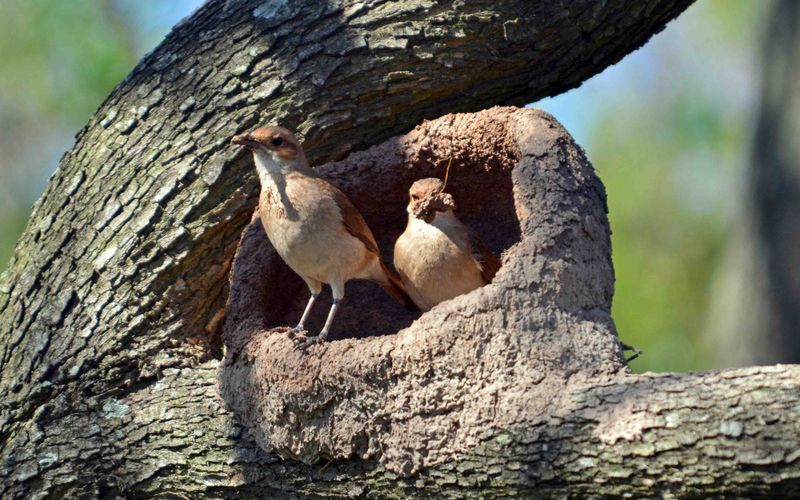
The Ovenbird constructs a nest that resembles a miniature clay oven, earning its name. Using mud and plant fibers, they form durable and weather-resistant homes.
These domed structures provide excellent protection against predators and environmental challenges. The nest’s unique design reflects the Ovenbird’s adaptability and resourcefulness.
Often found in the forests of South America, these nests are a testament to the bird’s architectural prowess. The Ovenbird’s nest-building technique showcases the innovative use of available materials, ensuring the safety and comfort of their offspring.
Cactus Wren
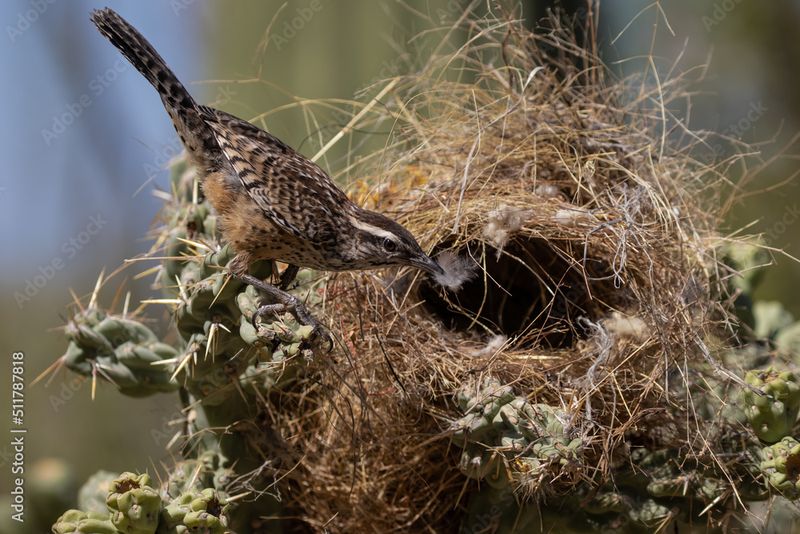
In the harsh desert landscape, the Cactus Wren finds security among the spines of cacti. Their nests, constructed from twigs, grass, and feathers, are safely nestled within these formidable plants.
This strategic placement deters predators, providing a sanctuary for their young. The Cactus Wren’s ingenuity in using the cactus’s natural defense highlights their adaptive nature.
Despite the arid and challenging conditions, these birds thrive by utilizing the desert’s resources to their advantage. Their nests are a symbol of resilience and cleverness in an unforgiving environment.
Tailorbird
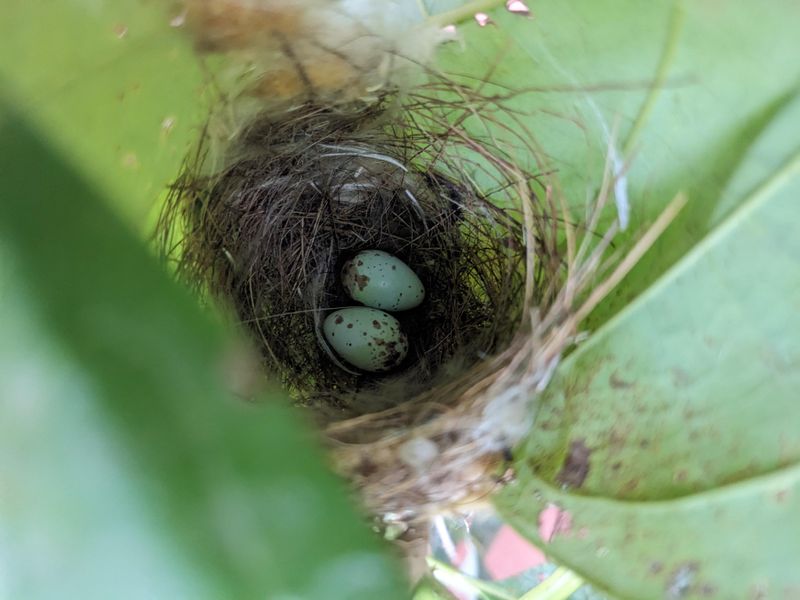
The Tailorbird is a seamstress of the avian world, stitching leaves together to form a hidden nest. With delicate precision, they use spider silk and plant fibers as thread, creating a secure and camouflaged home.
Nestled amidst garden foliage, these nests offer protection from predators. The Tailorbird’s sewing skills are a remarkable adaptation, demonstrating nature’s creativity.
Their meticulous craftsmanship ensures a snug and safe environment for their offspring. This unique nest-building method highlights the bird’s ability to transform simple materials into a functional and protective space.
Horned Coot

High in the Andes, the Horned Coot builds floating nests on mountain lakes. These impressive structures, made from piled vegetation, resemble small rafts. The nest’s buoyancy protects it from fluctuating water levels, ensuring the safety of the eggs.
The Horned Coot’s ingenuity is evident in its ability to construct secure homes in such challenging conditions. These nests are not only functional but also blend harmoniously with the stunning surroundings.
The Horned Coot’s nesting strategy is a testament to adaptation and survival in extreme environments, adding to the beauty of high-altitude landscapes.
American Flamingo
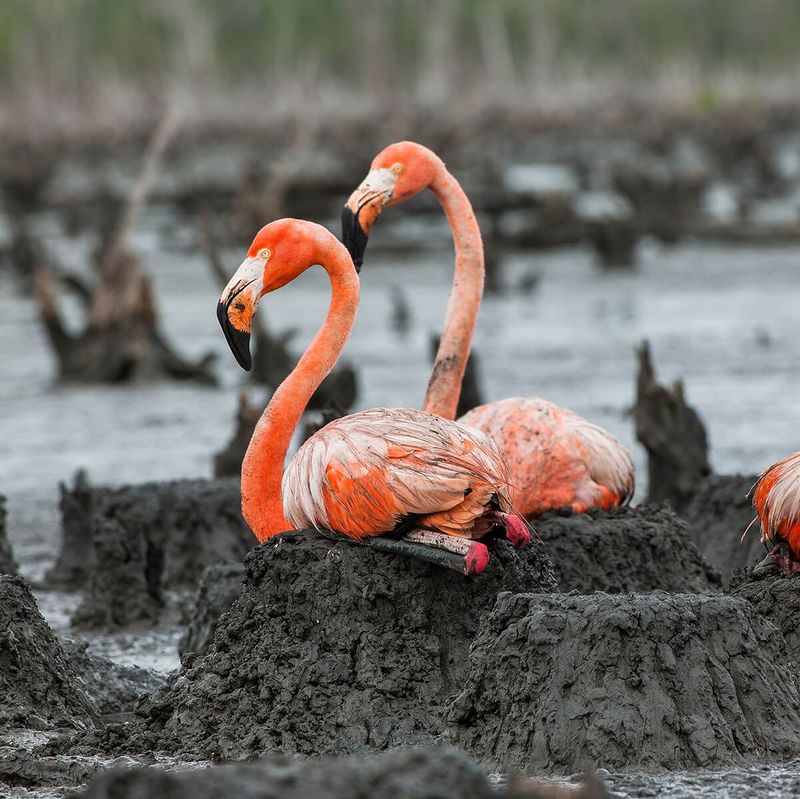
Standing tall and elegant, the American Flamingo crafts its nest from mud, shaping it into a mound. These nests are constructed in shallow waters, offering a safe haven for their eggs from shoreline predators.
The flamingo’s nest is a simple yet effective structure, elevated above water to protect the eggs from flooding. The nests are spaced within a colony, providing a social yet protective environment for hatchlings.
An interesting fact: The height of a flamingo’s nest may give clues about water levels in the lagoon. Search for ‘American Flamingo mud nests’ to discover these vibrant scenes.
Eurasian Penduline Tit
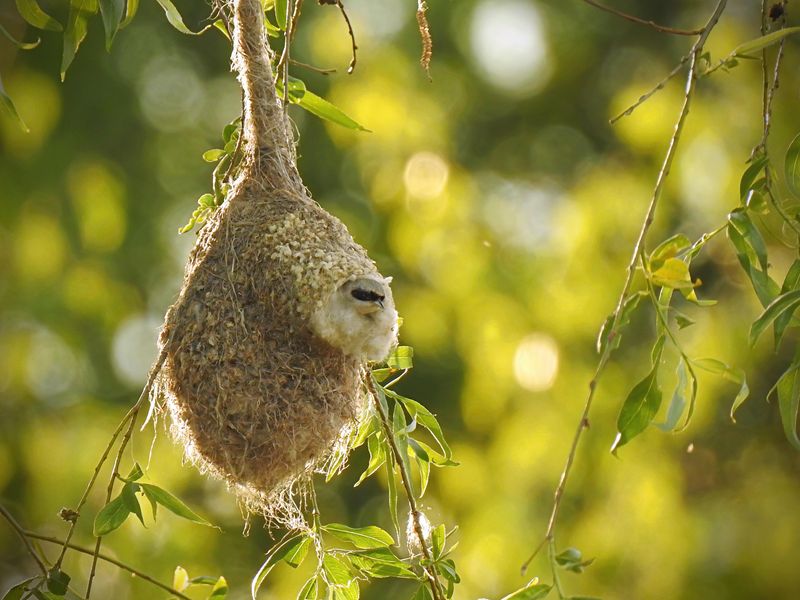
The Eurasian Penduline Tit is a master weaver, crafting hanging nests that dangle gracefully from tree branches. Constructed from plant fibers, these nests are soft, warm, and intricately designed.
The male begins the nest-building process, and the female often completes it, showcasing teamwork. These nests provide excellent insulation, protecting the young from harsh weather.
The Penduline Tit’s delicate craftsmanship results in nests that are both aesthetically pleasing and functional. Their penchant for detail and collaboration highlights the bird’s social nature and adaptability in European woodlands.
Anna’s Hummingbird
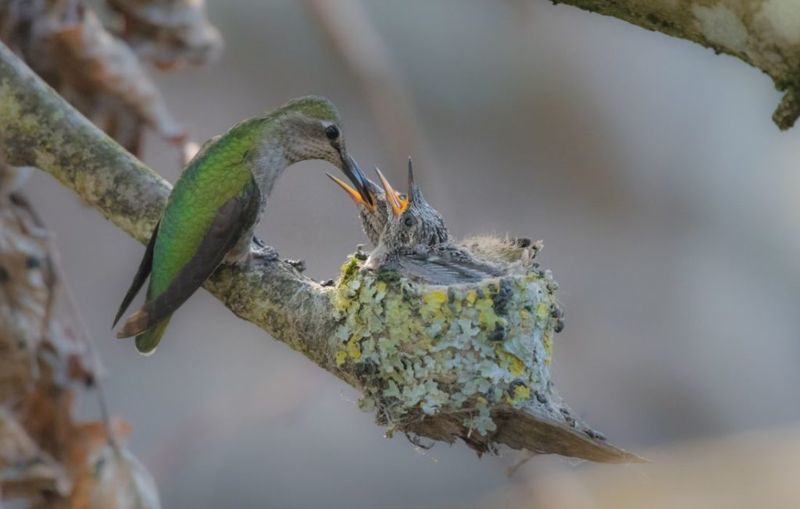
Anna’s Hummingbird, native to the western coastal regions of the United States, builds one of the most delicate nests in the bird world. Using materials like plant down, feathers, and spider silk, these tiny nests are marvels of avian engineering.
The nest’s elasticity allows it to expand as the chicks grow, a feature that is as practical as it is ingenious. Perched on slender branches, often camouflaged with lichens, these nests are hard to spot.
The spider silk gives the nest flexibility and strength, making it a safe cocoon for the tiny, rapidly growing chicks. Search ‘Anna’s Hummingbird nest spider silk’ for images of these intricate creations.
Monteiro’s Hornbill
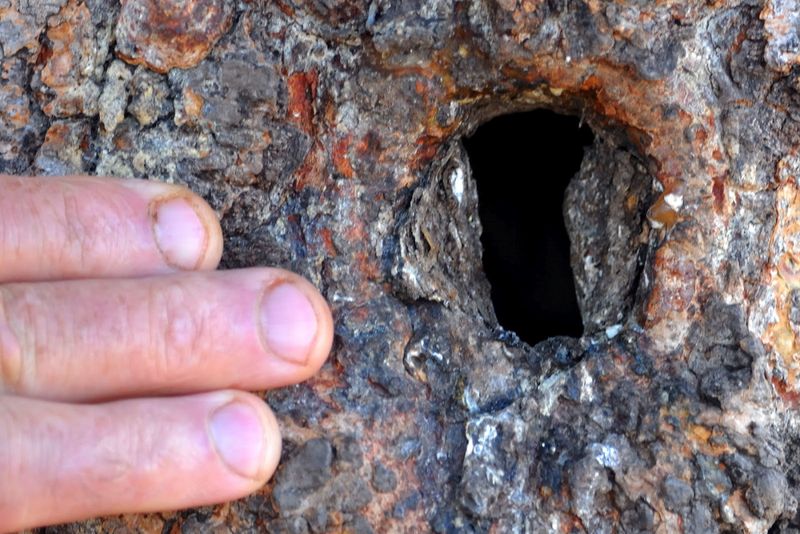
Monteiro’s Hornbill employs a unique strategy by sealing its mate inside a tree cavity using mud. This unusual nesting method protects the female and her eggs from predators.
The male provides food through a small slit, ensuring the safety and nourishment of the family. This cooperative effort highlights the Hornbill’s dedication to family and survival.
Their nesting behavior is an example of adaptability in challenging environments. Found in dry African woodlands, these birds showcase the incredible diversity of nesting techniques in the avian world, emphasizing resourcefulness and teamwork.
Black-browed Albatross
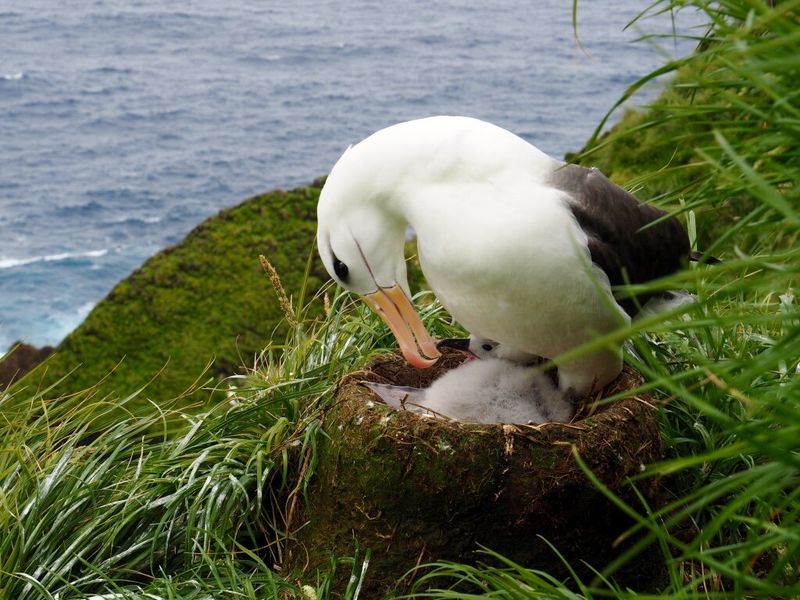
Perched on remote cliff sides, the Black-browed Albatross constructs nests from grass and mud. These sturdy homes withstand harsh winds and offer a panoramic view of the ocean.
The nest’s strategic location ensures safety from ground predators and proximity to food sources. The Albatross’s dedication to building secure nests reflects their commitment to raising strong offspring.
Their nesting sites are spectacles of natural beauty, with the ocean’s expanse as a backdrop. This bird’s ability to adapt to its environment and protect its young is a testament to avian ingenuity.
Wood Stork

In the wetlands, the Wood Stork builds nests from sticks and vegetation, often in communal rookeries. These large nests provide ample space for growing chicks and offer protection from predators.
The stork’s choice of swampy locations ensures access to water and food. Their nesting strategy highlights the importance of environment in avian survival. Wood Storks exhibit patience and precision in nest construction, ensuring stability and comfort.
The communal nature of their rookeries fosters social interaction and cooperation among the birds, enhancing their survival prospects in the wild.
African Jacana
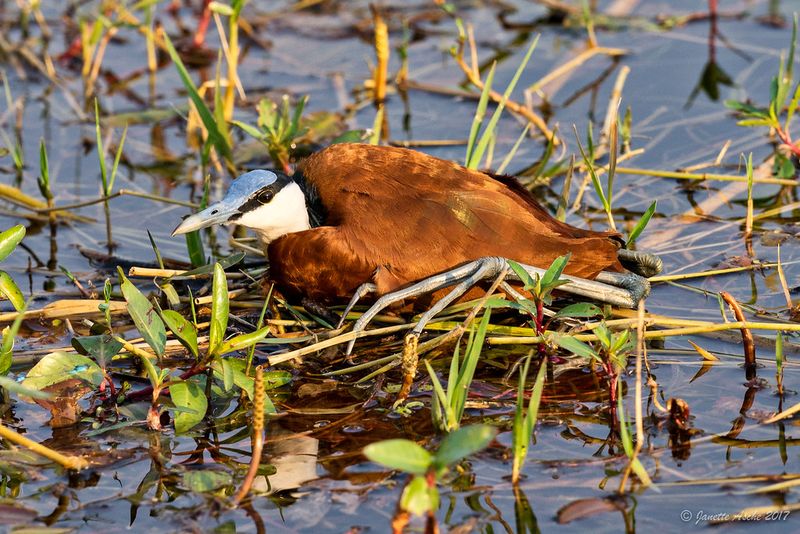
The African Jacana, known for its impressive floating nests, builds on lily pads in wetlands. These nests are carefully constructed to remain buoyant, providing a stable platform for their eggs.
The Jacana’s long toes distribute its weight, allowing it to walk on water plants. This adaptation is crucial for nesting in aquatic environments. Their nests are a marvel of balance and design, showcasing the bird’s ability to thrive in watery habitats.
The Jacana’s unique nesting strategy reflects the harmony between avian life and its surroundings, emphasizing adaptability and innovation.
Australian Brush-turkey
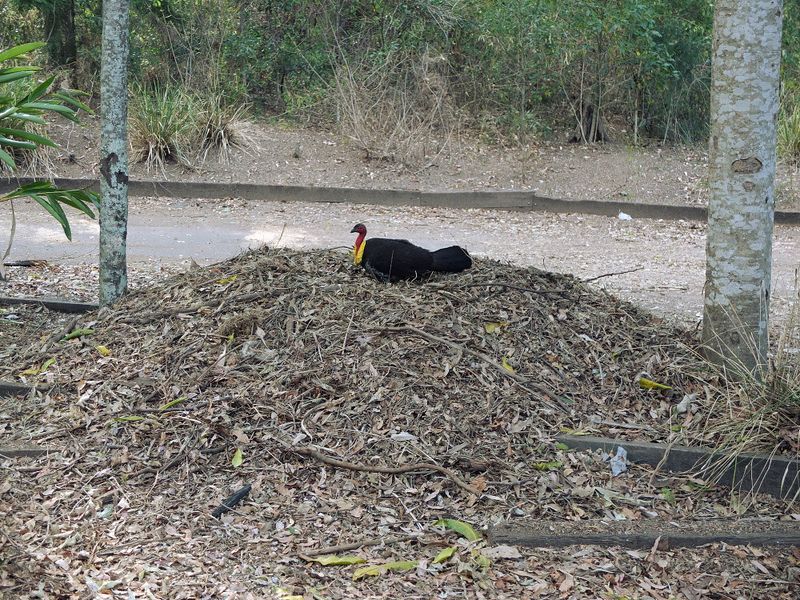
In the heart of the Australian forest, the Australian Brush-turkey creates an impressive mound nest, reaching up to 4 meters wide and 1 meter high. These birds are meticulous architects, using leaf litter and soil to craft a massive incubator.
Males dedicate themselves to perfecting the mound’s temperature, adjusting it by adding or removing material. This dedication ensures the eggs are kept at a constant warmth for optimal development.
Interestingly, the Brush-turkey relies on instinct rather than parental guidance to build these nests, showcasing a remarkable natural engineering ability.

